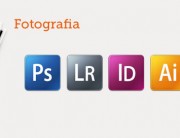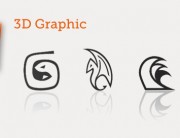Unity 3D Game Engine – Character Controller – 3rd Person
Narrative point of view in the creative writing of fiction describes the narrator’s position in relation to the story being told. If the narrator of the story is not present, or is present but is not the protagonist, and the story told is about someone else and is not the narrator’s own story, the story is narrated by He/She perspective.
In videogames player position has been compared to a camera. In a 3rd Person videogame you are able to see the full body of the player character. You can think about ‘Assassin’s Creed’ or ‘Tomb Rider’.
Character Controller is the specialized Physic Character Controller, character only please.
It is simply a capsule shaped Collider which can be told to move in some direction from a script. The Controller will then carry out the movement but be constrained by collisions. It will slide along walls, walk up stairs (if they are lower than the Step Offset) and walk on slopes within the Slope Limit.
The Controller does not react to forces on its own and it does not automatically push Rigidbodies away.
If you want to push Rigidbodies or objects with the Character Controller, you can apply forces to any object that it collides with via the OnControllerColliderHit() function through scripting.
On the other hand, if you want your player character to be affected by physics then you might be better off using a Rigidbody instead of the Character Controller.
Standard Assets – Ready to use
1. MAIN TOP MENU> Create Other> Plane, name it ‘Ground’
2. MAIN TOP MENU> Assets> Import Package> Character Controller
3. Project> Standard Assets> 3rd Person Controller (the blue cube)> DRAG AND DROP it over the Scene Window
4. Hierarchy> 3rd Person Controller> Inspector> Transform>
– Reset
– Position Y= 0.97 (bisogna posizionarlo in modo che il Collider ‘Character Controller’ sia sopra a ‘Ground’)
5. Play> use arrow key to move the character
Analisys
Hierarchy>
— Bip001 (Biped Skeleton)
— Bip001 Pelvis
— etc… (le altre parti di Biped)
— construction_worker (mesh)
Il personaggio sarà in grado:
– di essere completamente animato
– di correre anche su superfici irregolari, come può essere una collina
– di essere bloccato dalla presenza di ostacoli
– di saltare degli ostacoli
Questo grazie all’interazione di Collider posizionati sugli oggetti e sul terreno.
Analizziamo il contenuto degli oggetti in scena:
Ground
– Transform
– Mesh
– Mesh Collider
– Mesh Renderer
NOTA BENE: il terreno per la collisione DEVE essere una mesh separata da quella che utilizziamo per il rendering, con meno poligoni per ottimizzare il calcolo delle collisioni. In questo caso toglieremo il componente ‘Mesh Renderer’
Character
– Transform
– Animation
– Character Controller
– Third Person Controller (JS Script)
– Third Person Camera (JS Script)
Character Controller
Ha la forma di una capsula
– Slope Limit (buon valore 45): la pendenza del terreno massima che può superare
– Step Offset (buon valore 0.3): il personaggio potrà salire i gradini di una scalinata se sono al massimo alti 0.3 unità
– Skin Width (buon valore è 10% di Radius): 2 collider si possono penetrare del valore specificato. Un valore alto riduce il jitter (tremolii)
– Min Mov Distance (raccomandato a 0): se il personaggio tenta di muoversi di una valore inferiore a quello indicato, non si muoverà. Serve per ridurre il jitter (tremolii)
– Center: il centro della capsula
– Radius: raggio della capsula
– Height (2 metri per un umano): altezza della capsula
Third Person Controller (JS Script)
Inspector> Assign:
– Animation Clips
– Run Walk Jump Rotate -> Speed
The Code:
// Require a character controller to be attached to the same game object
@script RequireComponent(CharacterController)
public var idleAnimation : AnimationClip;
public var walkAnimation : AnimationClip;
public var runAnimation : AnimationClip;
public var jumpPoseAnimation : AnimationClip;
public var walkMaxAnimationSpeed : float = 0.75;
public var trotMaxAnimationSpeed : float = 1.0;
public var runMaxAnimationSpeed : float = 1.0;
public var jumpAnimationSpeed : float = 1.15;
public var landAnimationSpeed : float = 1.0;
private var _animation : Animation;
enum CharacterState {
Idle = 0,
Walking = 1,
Trotting = 2,
Running = 3,
Jumping = 4,
}
private var _characterState : CharacterState;
// The speed when walking
var walkSpeed = 2.0;
// after trotAfterSeconds of walking we trot with trotSpeed
var trotSpeed = 4.0;
// when pressing "Fire3" button (cmd) we start running
var runSpeed = 6.0;
var inAirControlAcceleration = 3.0;
// How high do we jump when pressing jump and letting go immediately
var jumpHeight = 0.5;
// The gravity for the character
var gravity = 20.0;
// The gravity in controlled descent mode
var speedSmoothing = 10.0;
var rotateSpeed = 500.0;
var trotAfterSeconds = 3.0;
var canJump = true;
private var jumpRepeatTime = 0.05;
private var jumpTimeout = 0.15;
private var groundedTimeout = 0.25;
// The camera doesnt start following the target immediately but waits for a split second to avoid too much waving around.
private var lockCameraTimer = 0.0;
// The current move direction in x-z
private var moveDirection = Vector3.zero;
// The current vertical speed
private var verticalSpeed = 0.0;
// The current x-z move speed
private var moveSpeed = 0.0;
// The last collision flags returned from controller.Move
private var collisionFlags : CollisionFlags;
// Are we jumping? (Initiated with jump button and not grounded yet)
private var jumping = false;
private var jumpingReachedApex = false;
// Are we moving backwards (This locks the camera to not do a 180 degree spin)
private var movingBack = false;
// Is the user pressing any keys?
private var isMoving = false;
// When did the user start walking (Used for going into trot after a while)
private var walkTimeStart = 0.0;
// Last time the jump button was clicked down
private var lastJumpButtonTime = -10.0;
// Last time we performed a jump
private var lastJumpTime = -1.0;
// the height we jumped from (Used to determine for how long to apply extra jump power after jumping.)
private var lastJumpStartHeight = 0.0;
private var inAirVelocity = Vector3.zero;
private var lastGroundedTime = 0.0;
private var isControllable = true;
function Awake ()
{
moveDirection = transform.TransformDirection(Vector3.forward);
_animation = GetComponent(Animation);
if(!_animation)
Debug.Log("The character you would like to control doesn't have animations. Moving her might look weird.");
/*
public var idleAnimation : AnimationClip;
public var walkAnimation : AnimationClip;
public var runAnimation : AnimationClip;
public var jumpPoseAnimation : AnimationClip;
*/
if(!idleAnimation) {
_animation = null;
Debug.Log("No idle animation found. Turning off animations.");
}
if(!walkAnimation) {
_animation = null;
Debug.Log("No walk animation found. Turning off animations.");
}
if(!runAnimation) {
_animation = null;
Debug.Log("No run animation found. Turning off animations.");
}
if(!jumpPoseAnimation && canJump) {
_animation = null;
Debug.Log("No jump animation found and the character has canJump enabled. Turning off animations.");
}
}
function UpdateSmoothedMovementDirection ()
{
var cameraTransform = Camera.main.transform;
var grounded = IsGrounded();
// Forward vector relative to the camera along the x-z plane
var forward = cameraTransform.TransformDirection(Vector3.forward);
forward.y = 0;
forward = forward.normalized;
// Right vector relative to the camera
// Always orthogonal to the forward vector
var right = Vector3(forward.z, 0, -forward.x);
var v = Input.GetAxisRaw("Vertical");
var h = Input.GetAxisRaw("Horizontal");
// Are we moving backwards or looking backwards
if (v < -0.2)
movingBack = true;
else
movingBack = false;
var wasMoving = isMoving;
isMoving = Mathf.Abs (h) > 0.1 || Mathf.Abs (v) > 0.1;
// Target direction relative to the camera
var targetDirection = h * right + v * forward;
// Grounded controls
if (grounded)
{
// Lock camera for short period when transitioning moving & standing still
lockCameraTimer += Time.deltaTime;
if (isMoving != wasMoving)
lockCameraTimer = 0.0;
// We store speed and direction seperately,
// so that when the character stands still we still have a valid forward direction
// moveDirection is always normalized, and we only update it if there is user input.
if (targetDirection != Vector3.zero)
{
// If we are really slow, just snap to the target direction
if (moveSpeed < walkSpeed * 0.9 && grounded)
{
moveDirection = targetDirection.normalized;
}
// Otherwise smoothly turn towards it
else
{
moveDirection = Vector3.RotateTowards(moveDirection, targetDirection, rotateSpeed * Mathf.Deg2Rad * Time.deltaTime, 1000);
moveDirection = moveDirection.normalized;
}
}
// Smooth the speed based on the current target direction
var curSmooth = speedSmoothing * Time.deltaTime;
// Choose target speed
//* We want to support analog input but make sure you cant walk faster diagonally than just forward or sideways
var targetSpeed = Mathf.Min(targetDirection.magnitude, 1.0);
_characterState = CharacterState.Idle;
// Pick speed modifier
if (Input.GetKey (KeyCode.LeftShift) || Input.GetKey (KeyCode.RightShift))
{
targetSpeed *= runSpeed;
_characterState = CharacterState.Running;
}
else if (Time.time - trotAfterSeconds > walkTimeStart)
{
targetSpeed *= trotSpeed;
_characterState = CharacterState.Trotting;
}
else
{
targetSpeed *= walkSpeed;
_characterState = CharacterState.Walking;
}
moveSpeed = Mathf.Lerp(moveSpeed, targetSpeed, curSmooth);
// Reset walk time start when we slow down
if (moveSpeed < walkSpeed * 0.3)
walkTimeStart = Time.time;
}
// In air controls
else
{
// Lock camera while in air
if (jumping)
lockCameraTimer = 0.0;
if (isMoving)
inAirVelocity += targetDirection.normalized * Time.deltaTime * inAirControlAcceleration;
}
}
function ApplyJumping ()
{
// Prevent jumping too fast after each other
if (lastJumpTime + jumpRepeatTime > Time.time)
return;
if (IsGrounded()) {
// Jump
// - Only when pressing the button down
// - With a timeout so you can press the button slightly before landing
if (canJump && Time.time < lastJumpButtonTime + jumpTimeout) {
verticalSpeed = CalculateJumpVerticalSpeed (jumpHeight);
SendMessage("DidJump", SendMessageOptions.DontRequireReceiver);
}
}
}
function ApplyGravity ()
{
if (isControllable) // don't move player at all if not controllable.
{
// Apply gravity
var jumpButton = Input.GetButton("Jump");
// When we reach the apex of the jump we send out a message
if (jumping && !jumpingReachedApex && verticalSpeed <= 0.0)
{
jumpingReachedApex = true;
SendMessage("DidJumpReachApex", SendMessageOptions.DontRequireReceiver);
}
if (IsGrounded ())
verticalSpeed = 0.0;
else
verticalSpeed -= gravity * Time.deltaTime;
}
}
function CalculateJumpVerticalSpeed (targetJumpHeight : float)
{
// From the jump height and gravity we deduce the upwards speed
// for the character to reach at the apex.
return Mathf.Sqrt(2 * targetJumpHeight * gravity);
}
function DidJump ()
{
jumping = true;
jumpingReachedApex = false;
lastJumpTime = Time.time;
lastJumpStartHeight = transform.position.y;
lastJumpButtonTime = -10;
_characterState = CharacterState.Jumping;
}
function Update() {
if (!isControllable)
{
// kill all inputs if not controllable.
Input.ResetInputAxes();
}
if (Input.GetButtonDown ("Jump"))
{
lastJumpButtonTime = Time.time;
}
UpdateSmoothedMovementDirection();
// Apply gravity
// - extra power jump modifies gravity
// - controlledDescent mode modifies gravity
ApplyGravity ();
// Apply jumping logic
ApplyJumping ();
// Calculate actual motion
var movement = moveDirection * moveSpeed + Vector3 (0, verticalSpeed, 0) + inAirVelocity;
movement *= Time.deltaTime;
// Move the controller
var controller : CharacterController = GetComponent(CharacterController);
collisionFlags = controller.Move(movement);
// ANIMATION sector
if(_animation) {
if(_characterState == CharacterState.Jumping)
{
if(!jumpingReachedApex) {
_animation[jumpPoseAnimation.name].speed = jumpAnimationSpeed;
_animation[jumpPoseAnimation.name].wrapMode = WrapMode.ClampForever;
_animation.CrossFade(jumpPoseAnimation.name);
} else {
_animation[jumpPoseAnimation.name].speed = -landAnimationSpeed;
_animation[jumpPoseAnimation.name].wrapMode = WrapMode.ClampForever;
_animation.CrossFade(jumpPoseAnimation.name);
}
}
else
{
if(controller.velocity.sqrMagnitude < 0.1) {
_animation.CrossFade(idleAnimation.name);
}
else
{
if(_characterState == CharacterState.Running) {
_animation[runAnimation.name].speed = Mathf.Clamp(controller.velocity.magnitude, 0.0, runMaxAnimationSpeed);
_animation.CrossFade(runAnimation.name);
}
else if(_characterState == CharacterState.Trotting) {
_animation[walkAnimation.name].speed = Mathf.Clamp(controller.velocity.magnitude, 0.0, trotMaxAnimationSpeed);
_animation.CrossFade(walkAnimation.name);
}
else if(_characterState == CharacterState.Walking) {
_animation[walkAnimation.name].speed = Mathf.Clamp(controller.velocity.magnitude, 0.0, walkMaxAnimationSpeed);
_animation.CrossFade(walkAnimation.name);
}
}
}
}
// ANIMATION sector
// Set rotation to the move direction
if (IsGrounded())
{
transform.rotation = Quaternion.LookRotation(moveDirection);
}
else
{
var xzMove = movement;
xzMove.y = 0;
if (xzMove.sqrMagnitude > 0.001)
{
transform.rotation = Quaternion.LookRotation(xzMove);
}
}
// We are in jump mode but just became grounded
if (IsGrounded())
{
lastGroundedTime = Time.time;
inAirVelocity = Vector3.zero;
if (jumping)
{
jumping = false;
SendMessage("DidLand", SendMessageOptions.DontRequireReceiver);
}
}
}
function OnControllerColliderHit (hit : ControllerColliderHit )
{
// Debug.DrawRay(hit.point, hit.normal);
if (hit.moveDirection.y > 0.01)
return;
}
function GetSpeed () {
return moveSpeed;
}
function IsJumping () {
return jumping;
}
function IsGrounded () {
return (collisionFlags & CollisionFlags.CollidedBelow) != 0;
}
function GetDirection () {
return moveDirection;
}
function IsMovingBackwards () {
return movingBack;
}
function GetLockCameraTimer ()
{
return lockCameraTimer;
}
function IsMoving () : boolean
{
return Mathf.Abs(Input.GetAxisRaw("Vertical")) + Mathf.Abs(Input.GetAxisRaw("Horizontal")) > 0.5;
}
function HasJumpReachedApex ()
{
return jumpingReachedApex;
}
function IsGroundedWithTimeout ()
{
return lastGroundedTime + groundedTimeout > Time.time;
}
function Reset ()
{
gameObject.tag = "Player";
}
Third Person Camera (JS Script)
Inspector> Assign:
– Comportamento di Main Camera
The Code:
var cameraTransform : Transform;
private var _target : Transform;
// The distance in the x-z plane to the target
var distance = 7.0;
// the height we want the camera to be above the target
var height = 3.0;
var angularSmoothLag = 0.3;
var angularMaxSpeed = 15.0;
var heightSmoothLag = 0.3;
var snapSmoothLag = 0.2;
var snapMaxSpeed = 720.0;
var clampHeadPositionScreenSpace = 0.75;
var lockCameraTimeout = 0.2;
private var headOffset = Vector3.zero;
private var centerOffset = Vector3.zero;
private var heightVelocity = 0.0;
private var angleVelocity = 0.0;
private var snap = false;
private var controller : ThirdPersonController;
private var targetHeight = 100000.0;
function Awake ()
{
if(!cameraTransform && Camera.main)
cameraTransform = Camera.main.transform;
if(!cameraTransform) {
Debug.Log("Please assign a camera to the ThirdPersonCamera script.");
enabled = false;
}
_target = transform;
if (_target)
{
controller = _target.GetComponent(ThirdPersonController);
}
if (controller)
{
var characterController : CharacterController = _target.collider;
centerOffset = characterController.bounds.center - _target.position;
headOffset = centerOffset;
headOffset.y = characterController.bounds.max.y - _target.position.y;
}
else
Debug.Log("Please assign a target to the camera that has a ThirdPersonController script attached.");
Cut(_target, centerOffset);
}
function DebugDrawStuff ()
{
Debug.DrawLine(_target.position, _target.position + headOffset);
}
function AngleDistance (a : float, b : float)
{
a = Mathf.Repeat(a, 360);
b = Mathf.Repeat(b, 360);
return Mathf.Abs(b - a);
}
function Apply (dummyTarget : Transform, dummyCenter : Vector3)
{
// Early out if we don't have a target
if (!controller)
return;
var targetCenter = _target.position + centerOffset;
var targetHead = _target.position + headOffset;
// DebugDrawStuff();
// Calculate the current & target rotation angles
var originalTargetAngle = _target.eulerAngles.y;
var currentAngle = cameraTransform.eulerAngles.y;
// Adjust real target angle when camera is locked
var targetAngle = originalTargetAngle;
// When pressing Fire2 (alt) the camera will snap to the target direction real quick.
// It will stop snapping when it reaches the target
if (Input.GetButton("Fire2"))
snap = true;
if (snap)
{
// We are close to the target, so we can stop snapping now!
if (AngleDistance (currentAngle, originalTargetAngle) < 3.0)
snap = false;
currentAngle = Mathf.SmoothDampAngle(currentAngle, targetAngle, angleVelocity, snapSmoothLag, snapMaxSpeed);
}
// Normal camera motion
else
{
if (controller.GetLockCameraTimer () < lockCameraTimeout)
{
targetAngle = currentAngle;
}
// Lock the camera when moving backwards!
// * It is really confusing to do 180 degree spins when turning around.
if (AngleDistance (currentAngle, targetAngle) > 160 && controller.IsMovingBackwards ())
targetAngle += 180;
currentAngle = Mathf.SmoothDampAngle(currentAngle, targetAngle, angleVelocity, angularSmoothLag, angularMaxSpeed);
}
// When jumping don't move camera upwards but only down!
if (controller.IsJumping ())
{
// We'd be moving the camera upwards, do that only if it's really high
var newTargetHeight = targetCenter.y + height;
if (newTargetHeight < targetHeight || newTargetHeight - targetHeight > 5)
targetHeight = targetCenter.y + height;
}
// When walking always update the target height
else
{
targetHeight = targetCenter.y + height;
}
// Damp the height
var currentHeight = cameraTransform.position.y;
currentHeight = Mathf.SmoothDamp (currentHeight, targetHeight, heightVelocity, heightSmoothLag);
// Convert the angle into a rotation, by which we then reposition the camera
var currentRotation = Quaternion.Euler (0, currentAngle, 0);
// Set the position of the camera on the x-z plane to:
// distance meters behind the target
cameraTransform.position = targetCenter;
cameraTransform.position += currentRotation * Vector3.back * distance;
// Set the height of the camera
cameraTransform.position.y = currentHeight;
// Always look at the target
SetUpRotation(targetCenter, targetHead);
}
function LateUpdate () {
Apply (transform, Vector3.zero);
}
function Cut (dummyTarget : Transform, dummyCenter : Vector3)
{
var oldHeightSmooth = heightSmoothLag;
var oldSnapMaxSpeed = snapMaxSpeed;
var oldSnapSmooth = snapSmoothLag;
snapMaxSpeed = 10000;
snapSmoothLag = 0.001;
heightSmoothLag = 0.001;
snap = true;
Apply (transform, Vector3.zero);
heightSmoothLag = oldHeightSmooth;
snapMaxSpeed = oldSnapMaxSpeed;
snapSmoothLag = oldSnapSmooth;
}
function SetUpRotation (centerPos : Vector3, headPos : Vector3)
{
// Now it's getting hairy. The devil is in the details here, the big issue is jumping of course.
// * When jumping up and down we don't want to center the guy in screen space.
// This is important to give a feel for how high you jump and avoiding large camera movements.
//
// * At the same time we dont want him to ever go out of screen and we want all rotations to be totally smooth.
//
// So here is what we will do:
//
// 1. We first find the rotation around the y axis. Thus he is always centered on the y-axis
// 2. When grounded we make him be centered
// 3. When jumping we keep the camera rotation but rotate the camera to get him back into view if his head is above some threshold
// 4. When landing we smoothly interpolate towards centering him on screen
var cameraPos = cameraTransform.position;
var offsetToCenter = centerPos - cameraPos;
// Generate base rotation only around y-axis
var yRotation = Quaternion.LookRotation(Vector3(offsetToCenter.x, 0, offsetToCenter.z));
var relativeOffset = Vector3.forward * distance + Vector3.down * height;
cameraTransform.rotation = yRotation * Quaternion.LookRotation(relativeOffset);
// Calculate the projected center position and top position in world space
var centerRay = cameraTransform.camera.ViewportPointToRay(Vector3(.5, 0.5, 1));
var topRay = cameraTransform.camera.ViewportPointToRay(Vector3(.5, clampHeadPositionScreenSpace, 1));
var centerRayPos = centerRay.GetPoint(distance);
var topRayPos = topRay.GetPoint(distance);
var centerToTopAngle = Vector3.Angle(centerRay.direction, topRay.direction);
var heightToAngle = centerToTopAngle / (centerRayPos.y - topRayPos.y);
var extraLookAngle = heightToAngle * (centerRayPos.y - centerPos.y);
if (extraLookAngle < centerToTopAngle)
{
extraLookAngle = 0;
}
else
{
extraLookAngle = extraLookAngle - centerToTopAngle;
cameraTransform.rotation *= Quaternion.Euler(-extraLookAngle, 0, 0);
}
}
function GetCenterOffset ()
{
return centerOffset;
}










